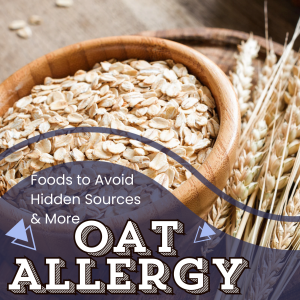Today we’re going to take a look at an oat allergy (avena sativa). We’ll look at what it means, where oats are found in food and non-food items, along with other information related to managing an oat allergy.
If you need oat free recipes, check out the Advanced Recipe Search on RAISE where you can choose the Oat Free filter and select from over 100 additional free-from filters to customize the results.
What is an Oat Allergy?
An oat allergy, in medical context, means that you have an immune system IgE mediated allergic reaction to oats and foods containing oats. An allergic reaction usually happens within a 4 hour window of consuming the food. In some people, they can also have an allergic reaction when touching oats (called a contact allergy/contact reaction), or when inhaling oat particulates in the air (called an airborne reaction).
Food allergy symptoms can vary from person to person, as no two people are the same. Some people experience mild symptoms such as a persistent non-painful rash, severe gastrointestinal symptoms, stuffy nose, sore throat, and other ENT issues, whilst some have a sudden drop in blood pressure, shortness of breath, or difficulty breathing. There are hundreds of different symptoms a person can experience due to food allergies. The most severe type of allergic reaction is called anaphylaxis. Severe allergic reactions can lead to anaphylactic shock, and if left untreated, can lead to death.
It’s important that those with food allergies have an action plan, and epinephrine auto-injectors at the ready if necessary. Whilst having a food allergy does impact your life, know that your life (and your meals) will still be awesome.
Symptoms of an Oat Allergy
Upon ingesting oats, if you’re allergic to it, symptoms can include swelling of the lips, skin rashes, eczema symptoms, itchy/sore throat or mouth, weak pulse, chest pains, asthma symptoms, GI pain/distress, flushing, hives, and more. If you have an allergic reaction to something you’ve eaten or drank, seek immediate medical attention.
Not every reaction is life-threatening anaphylaxis. People can experience a wide range of symptoms of a food allergy, as no two people are the same. That doesn’t mean it’s not a true allergy, and that it shouldn’t be taken seriously. It’s also important to know that previous reactions don’t predict future reactions. In some people, with continued exposure to the allergen, the reaction becomes more severe each time.
The worst type of life-threatening reaction is called anaphylactic shock. If left untreated, it can lead to death. If you’re managing a food allergy, be sure to have a prescription for an epinephrine auto-injector (often times called an Epi-Pen or AviQ).
Related Articles
- Gluten Free Oats: Know the Details
- Barley Allergy Information
- How to Go Gluten Free When You’re Newly Diagnosed
- Gluten Free vs Wheat Free
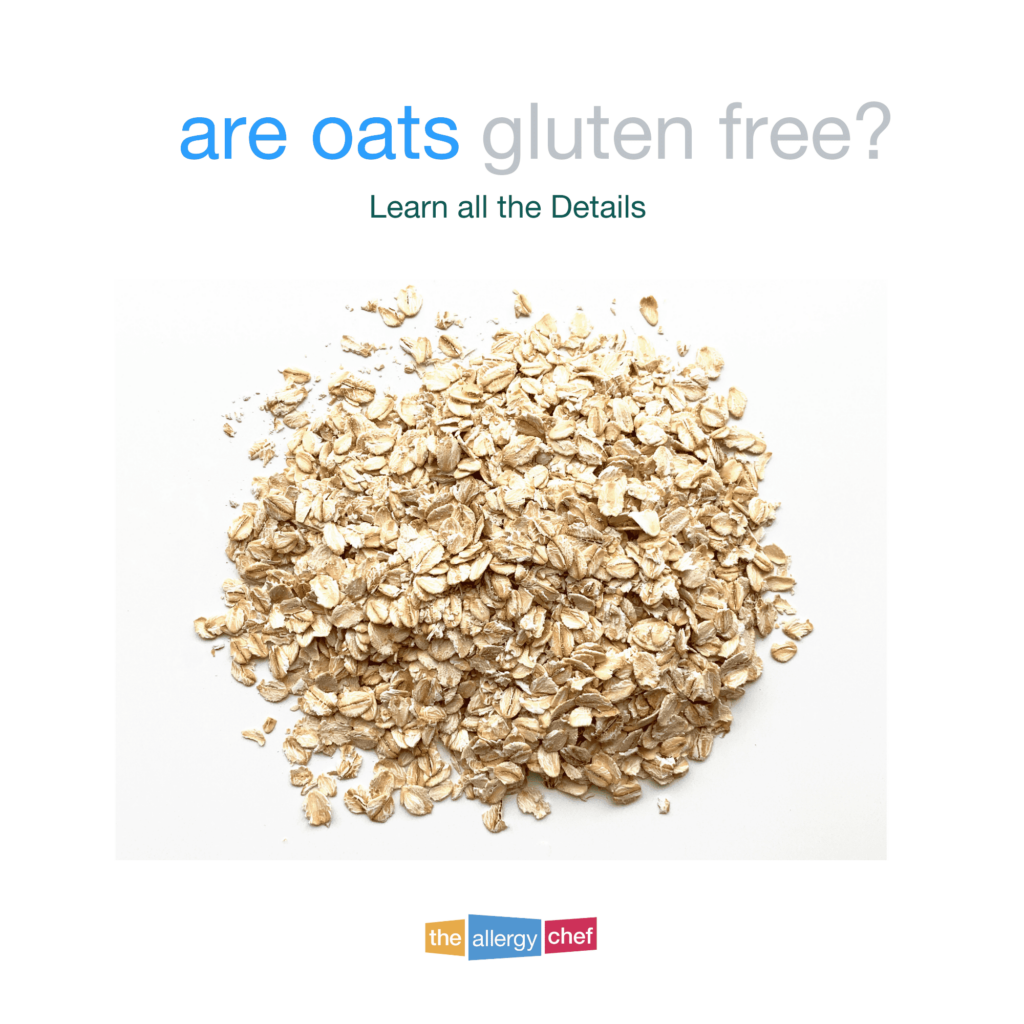 |
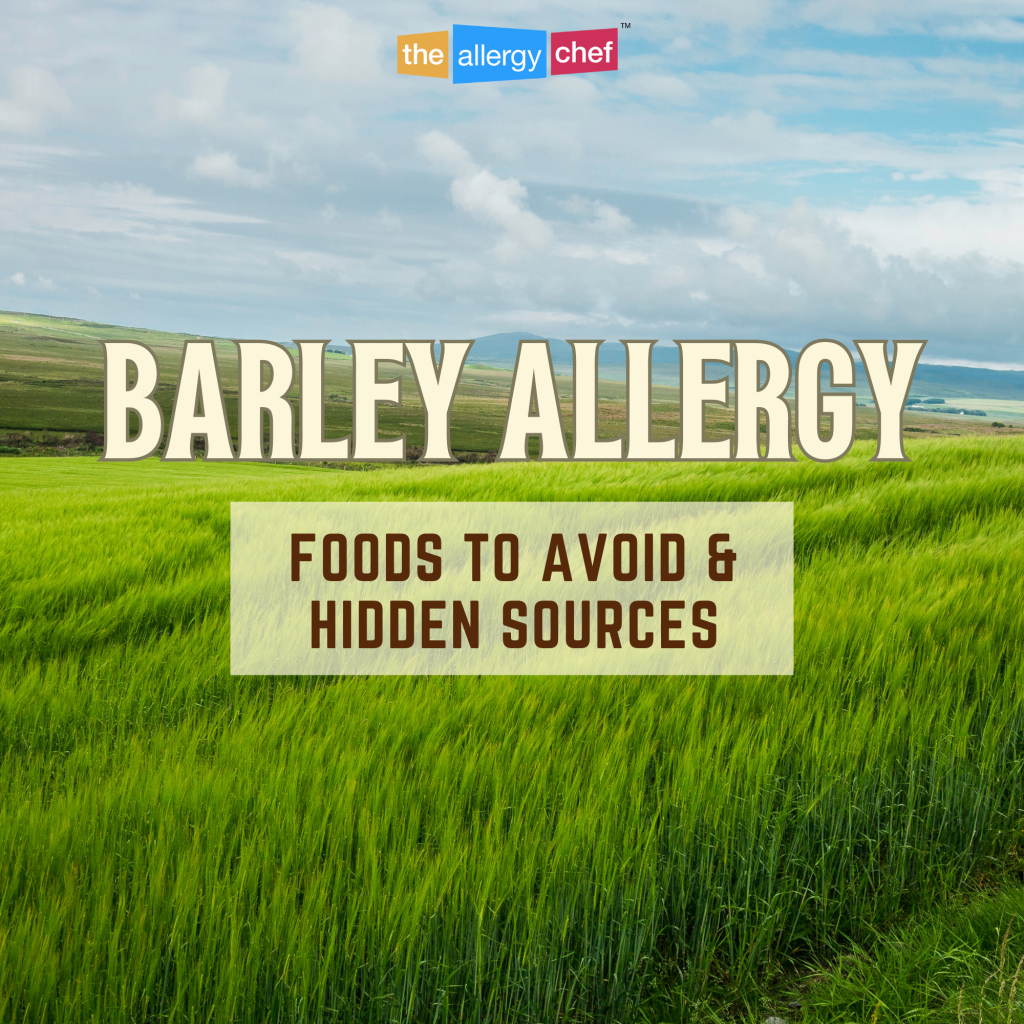 |
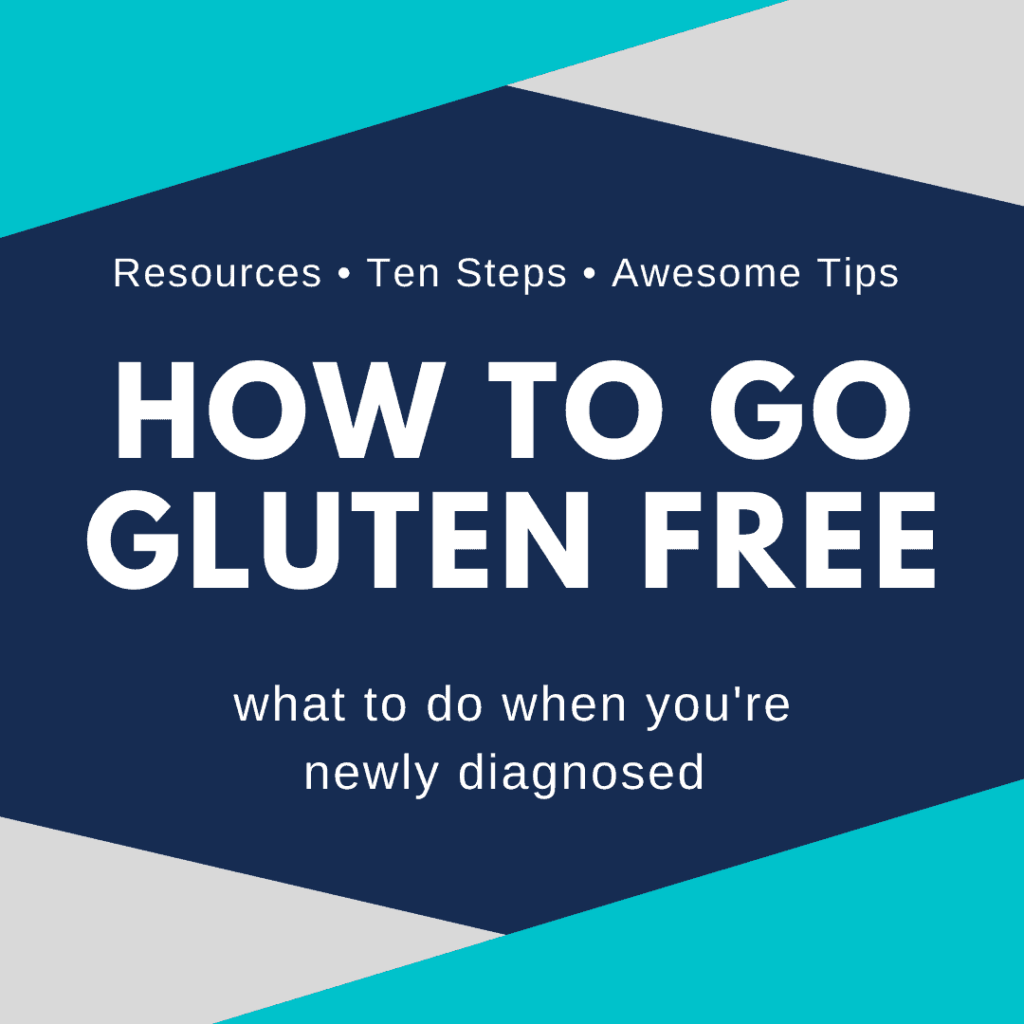 |
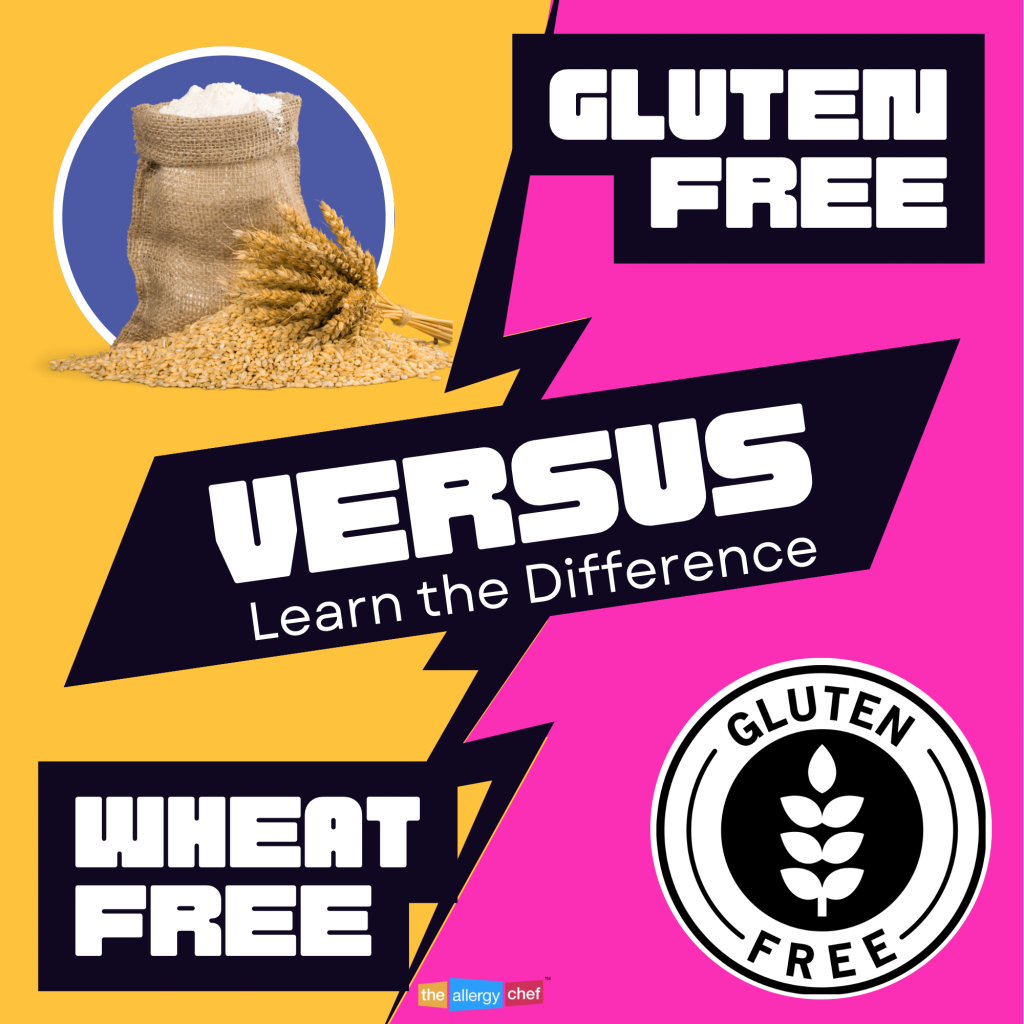 |
How is an Oat Allergy Diagnosed?
There are several ways to find out you’re allergic to oats. For people who experience an allergic response that’s not life threatening, they usually schedule an appointment with their healthcare provider. This journey can look different for everyone. Some GPs understand right away what’s happening and refer the patient to an allergist for further oat allergy testing. On the other hand, some GPs won’t make the connection and think it’s something else since the symptoms can overlap with other medical conditions.
Remember, you are your own best advocate. If you’re certain that something you’re eating is causing some type of reaction, insist that you be referred to an allergy doctor or GI, in addition to whatever other tests your GP would like to order.
Generally, an allergist can diagnosis you wither with a skin prick test or via a blood test. Sometimes, patch testing is used. This article talks more about the different types of tests used in the United States. It’s important to know that testing isn’t always 100% accurate.
The gold standard for a non-life threatening allergy is an in-office oral food challenge. Your doctor will have you ingest the food then monitor your vitals. Additionally, they will have you raise you heart rate to ensure a reaction doesn’t happen. With life threatening allergic reactions, or severe allergic reactions, the cause and effect are usually very obvious and testing isn’t always required.
However, no two people are the same. Some people have a true allergy with a delayed reaction (they may experience symptoms 4-6 hours after ingestion or even later). If you’re finding that testing isn’t helping, you may want to work with your medical team on an elimination diet and detailed food journaling. This can help them better understand what you’re experiencing and what may be the root cause of your symptoms.
Ultimately, YOU are in charge. If you don’t want to eat a specific food, you don’t have to, even if you don’t have an official diagnosis. Not comfortable with a food challenge? Don’t do it. If there’s testing you want to have done, be vocal and request it.
Oat Allergy vs. Celiac Disease
Not everyone who avoids oats is allergic to them. In the case of Celiac Disease, an autoimmune disorder, patients must adhere to a strict gluten-free diet to manage the condition. This is sometimes called a gluten allergy by patients, as they feel it’s easier to explain. However, don’t be confused. The term gluten allergy is a misnomer. You either have a gluten intolerance, Celiac Disease, or a wheat allergy.
For about 25% of patients managing Celiac Disease, oats are not an option, and this is because of the protein avenin. It’s similar to the gluten proteins found in wheat, rye, and barley. Now, this is why the term gluten allergy is a misnomer. In wheat, the gluten protein is called gliadin, in barley it’s called hordein, and in rye it’s called secalin.
Celiac Disease can cause a wide range of mild to severe symptoms in patients, but it does not cause symptoms of anaphylaxis. Remember, Celiac Disease is an autoimmune disorder (the body attacking itself), rather than an IgE mediated response (which is what an allergy is). At the end of the day though, don’t let these terms trip you up. If you can’t eat the food, you can’t eat the food. Period. It’s just nice to know the proper terminology.
Celiac Disease is similar to an allergy in that for most patients, trace amounts of gluten can cause a reaction. You can read more about 20PPM (parts per million) and how to manage Celiac Disease in this article. If you’re new to gluten free, this article is very helpful.
The Glyphosate Connection
For some people, they have adverse reactions when eating oats, but their allergy test results come back negative. However, when they switch to eating organic oat products, their symptoms clear up. This usually indicates that you’re reacting to something in the growing process, and for many people, it’s glyphosate.
Glyphosate, a widely used herbicide and crop desiccant, can cause a range of allergy-like reactions in sensitive individuals. When people realize this is the root cause to their symptoms, they often switch to a completely organic diet and source food carefully to avoid pesticides and herbicides. From there, symptoms that may have indicated a food intolerance or other medical condition clear up.
There’s no way to know currently how many people have to avoid specific pesticides, but it’s something to keep in the back of your mind if things aren’t adding up for you.
Other Reasons You May Need to be Oat Free
In addition to an oat allergy and Celiac Disease, there are a few other reasons a person may need to avoid eating oat ingredients. Those include:
- FPIES (Food Protein-Induced Enterocolitis Syndrome)
- Non-Celiac Gluten Sensitivity (NCGS)
- GI Disorders or Other Medical Condition (Crohn’s, etc.)
- Keto Diet for Medical Reasons (seizures etc.)
- GAPs or SCD Diet for Medical Reasons
- People with a Nickel Allergy or who Follow a Low/No Nickel Diet
Oats Are Not One of the Common Food Allergies in the United States
In the United States, we have what’s called the Top 9 Allergens (wheat, milk, egg, soy, peanut, tree nut [including coconut as per the FDA], fish, shellfish, and sesame). In Europe, where they have the Top14 Allergens, “Gluten Containing Grains” are counted as a top allergen. They’ve included wheat, barley, rye, and oats in that term.
This is an important distinction to make as it affects the product labels. Food allergen labeling laws dictate how major allergens are called out on a product. In the US, it must either be in bold, or in a “contains” statement. Since oats are not considered one of the top/common allergens, it won’t be called out or highlighted if it’s one of the ingredients in the product.
In Europe however, since oats fall under a gluten-containing grain, you should see it called out.
Reading Ingredient Labels
Reading labels will always be your first line of defense when determining if a product is oat free. Since it’s gaining in popularity, you will see it more frequently in packaged foods and beverages. Food allergy labeling laws cite that major food allergens must be called out. I’m sure you’ve seen something like “contains milk” on an ingredient label. However, since oats aren’t one of the top allergens* in the US, it doesn’t have to be in bold or in the contains statement. If you’re in Europe, as stated in the above section, you should see it called out on a label.
Take your time and use your finger to guide your eyes as you read ingredient labels. You’ll see oat, oat milk, oat flour, gluten free oats, oatmeal, or something else containing the term oat listed in the ingredients. If you see these terms, the product contains oats and you should look for something else.
Whilst food labels have to disclose all of the ingredients, there are some loop holes available to them. For example, the term “natural flavors” isn’t precise and represents thousands of individual ingredients and chemical compounds. The best way to determine if a product will be safe for you is to reach out to food manufacturers to find out what’s really in the food. Anytime they tell you “that’s proprietary”, walk away. It’s not worth the risk when a company isn’t willing to be transparent.
*In the United States, the Top 9 Allergens are: wheat, milk, egg, soy, peanut, tree nut (including coconut as per the FDA), fish, shellfish, and sesame.
Common Places You’ll Find Oats and Oat-Based Products/Ingredients
- Oat Milk
- Oat Flour
- Gluten-Free Oats
- Purity Protocol Oats
- Oatmeal
- Baked Goods (Brownies, Cookies, Cake, Streusel, Crumbles, etc.)
- “Better For You” Type Products
- Breakfast Bars
- Breakfast Cereals
- Granola Bars
- Gluten Free Products (in the United States)
- Power Balls
Hidden Sources of Oats
- Dairy Free & Vegan Products (oat milk is a common substitute these days for cow’s milk)
- Skin Care Products
- Baby’s First Solid Foods Type Products
Where You Won’t Find Oats
The upside is that there are a few diet types that are 100% oat free. Those include:
- AIP Paleo (Auto Immune Paleo Protocol)
- GAPs Diet (Gut and Psychology Syndrome)
- Paleo Diet
- SCD Diet (Specific Carbohydrate)
When you’re looking for recipes online or shopping for products, if you see these diet types called out, the products will be oat free. The downside however is that if you’re only oat free, these diet types eliminate a lot of foods you can safely eat.
Answering Your Oat Allergy Questions
Is an oat allergy the same thing as an oat intolerance?
No, these are not the same thing. An allergy is an IgE immune response to the consumption of oats. This can cause mild to severe symptoms in those are who are allergic. A severe allergic reaction, also called anaphylactic shock, can lead to death if not treated.
An oat intolerance (sometimes called an oat sensitivity) on the other hand activates a non-IgE mediated response from the immune system. Symptoms can be mild such as a runny nose, itchy skin, or itchy mouth. Severe reactions due to an intolerance are usually things like painful migraines and severe GI distress.
The two hallmark differences are which Igs are responsible (there are 5 different types), and the fact that an intolerance cannot lead to anaphylactic shock.
I have a wheat allergy. Do I need to avoid oats as well?
No, but you will need to purchase gluten free oats. An even better idea is to purchase organic Purity Protocol Gluten Free Oats. This ensures that your oats have not been processed alongside wheat.
The growing and processing of wheat and oats on the same land and in the same facilities is incredibly common. In fact, if you search online, there are videos of people removing pieces of wheat from their (non gluten free) oats. Since you have a wheat allergy, it’s crucial that you avoid ingredients that are commonly processed alongside wheat, and that includes oats. GF Harvest and Zego oats are two of the best options currently on the market.
If oats are in cosmetic products, does it have to be labeled?
The guidelines put forth by the food and drug administration (FDA, here in the United States specifically) does not require the same type of labeling in cosmetic products as food products. What that means is that you’ll have to contact each company to find out if there’s oats or an oat derivative in their ingredients. Most likely, you’ll talk with a rep, but ultimately will need to talk with the Q&A department, or one of their scientists. Don’t be surprised if it takes them a week to get the information back to you.
A lot of cosmetics, especially the non-organic variety, have a long list of ingredients, and each one will need to be checked for the presence of oats or an oat derivative.
I have a lactose intolerance. How hard will it be for me to avoid oat milk?
Overall, I don’t think you’ll have too much difficulty. If you’re concerned about coffee shops, many offer several different dairy free milk options including plant-based milks from tree nuts. If cross contact is a concern, you could always bring your own milk with you in a travel container.
Beyond that, it sounds like you’re able to consume wheat and most other major allergens. I think you’ll find that avoiding milk + oats won’t be too difficult. In the ice cream division, there are cashew milk ice creams and soy milk ice creams to choose from. In yogurt, there are soy and tree nut based options. The same is true of things like sour cream, butter, and cream cheese. I’ve seen many that are both dairy, lactose, and oat free.
Is there such a thing as an oatmeal allergy? I have adverse reactions to oatmeal, but not to oat milk.
There are a few things that could be happening to you, so I encourage you to start keeping a detailed food journal and schedule an appointment with your medical team. There’s no such thing as an oatmeal allergy as you’ve described it. If a person is allergic to oats, they can’t have any product containing oats.
Since you’re reacting to oatmeal but not oat milk, the first question is, do you have an oat intolerance with a specific threshold? If so, it could be that the amount of oat present in the milk isn’t enough to elicit a reaction. Whereas oatmeal is a reaction waiting to happen because it’s a lot of oats for your body to process.
Second question is: are you reacting to something in the oatmeal product that’s not in the oat milk? This is especially true if you purchase flavoured oatmeals. Perhaps you’re reacting to cinnamon in an apple cinnamon oatmeal packet, not the actual oats.
Third, there could be a glyphosate connection. In this case, there may or may not also be a threshold involved. However, maybe you purchase conventional oatmeal and organic oat milk.
Start with your medical team and to food allergy testing. You may find that you are indeed allergic to oats but for some reason have a threshold that allows for a small amount via the milk. Or, you may learn that there’s no allergy. Keep a detailed food journal as well. From there, an in-office oat test with organic gluten free purity protocol oats would be the final step to determining if you can or cannot have oats. Those are the purest option and if you don’t react to those, you’re having a reaction to something in the specific oatmeal that you purchase.
Is it possible to have a delayed food allergy reaction to oats?
Yes, it’s possible to have a delayed allergic reaction outside of the 4 hour window to oats. In fact, that’s one of the hallmark features of the condition known as FPIES. A delayed reaction doesn’t mean you don’t have a true allergy. However, it could also mean that you have an intolerance, not an allergy. Your medical team should be able to run tests to help you determine which you have.
Either way, it sounds like you can’t eat oats, and they should be avoided.

